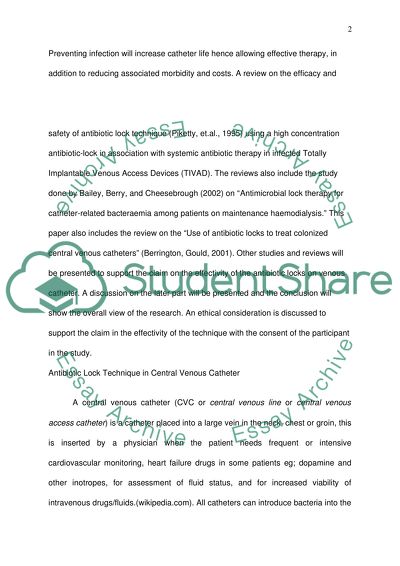Cite this document
(“Antibiotic Lock Technique Essay Example | Topics and Well Written Essays - 1500 words”, n.d.)
Antibiotic Lock Technique Essay Example | Topics and Well Written Essays - 1500 words. Retrieved from https://studentshare.org/health-sciences-medicine/1513707-antibiotic-lock-technique
Antibiotic Lock Technique Essay Example | Topics and Well Written Essays - 1500 words. Retrieved from https://studentshare.org/health-sciences-medicine/1513707-antibiotic-lock-technique
(Antibiotic Lock Technique Essay Example | Topics and Well Written Essays - 1500 Words)
Antibiotic Lock Technique Essay Example | Topics and Well Written Essays - 1500 Words. https://studentshare.org/health-sciences-medicine/1513707-antibiotic-lock-technique.
Antibiotic Lock Technique Essay Example | Topics and Well Written Essays - 1500 Words. https://studentshare.org/health-sciences-medicine/1513707-antibiotic-lock-technique.
“Antibiotic Lock Technique Essay Example | Topics and Well Written Essays - 1500 Words”, n.d. https://studentshare.org/health-sciences-medicine/1513707-antibiotic-lock-technique.


